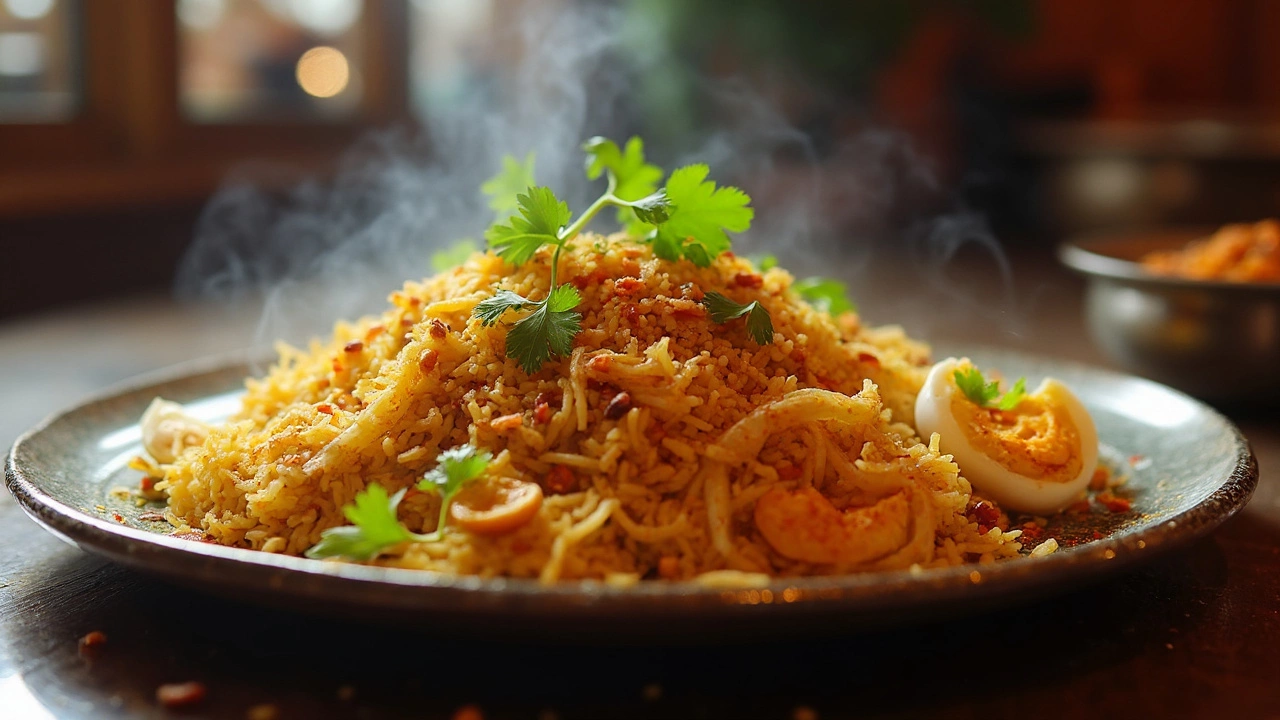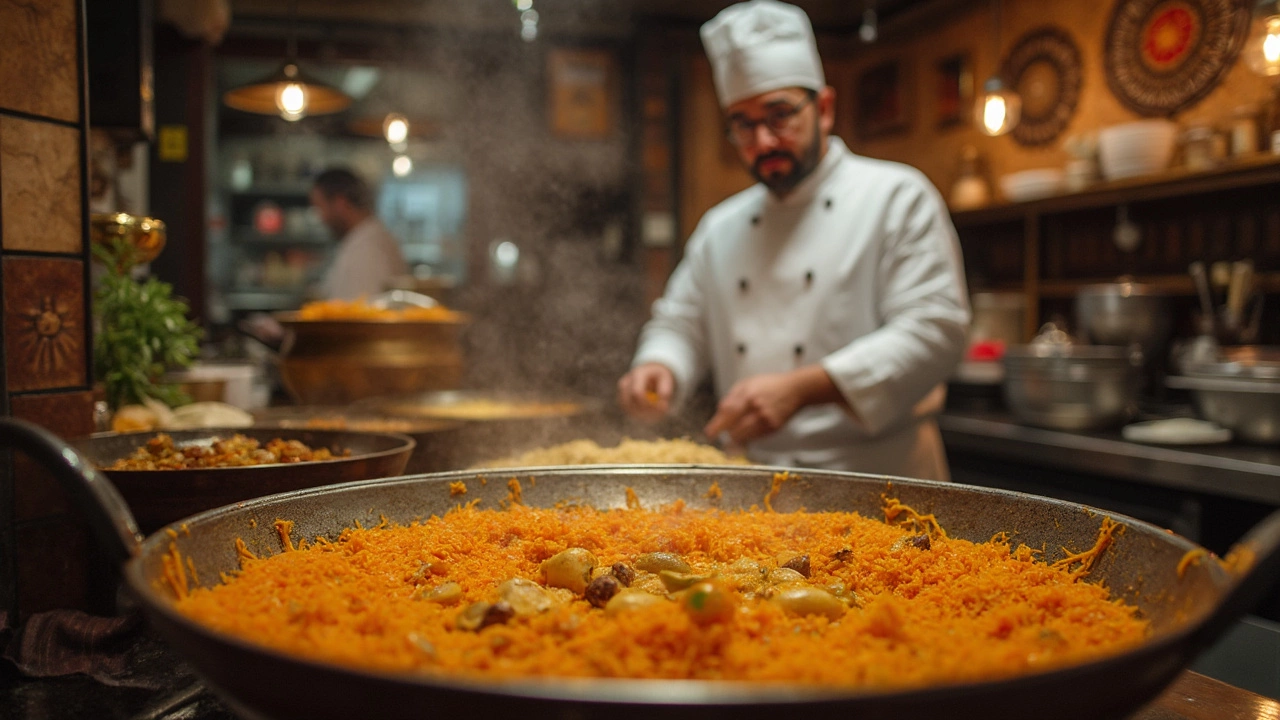Have you ever sat in a restaurant and wondered why their biryani tastes so much better than the one you whip up at home? You're not alone. There's something special about restaurant biryani that makes it irresistible. Let's dissect what makes it stand out and how you might capture a bit of that magic in your own kitchen.
First up, let's talk ingredients. Restaurants often use special types of rice and spices, which might not be the ones you typically use. The quality and authenticity of ingredients like saffron, ghee, and specific rice varieties like basmati can dramatically affect flavor. Don't underestimate the power of fresh herbs and spices, too—the difference they make is massive.
Secret Ingredients
One of the biggest reasons why restaurant biryani tastes out of this world is the choice of ingredients. Chefs often go the extra mile by picking high-grade elements you might not have on hand at home.
Basmati Rice
The foundation of any biryani is the rice, and restaurants use premium long-grain basmati. Its unique aroma and texture are unmatched and essential for that perfect biryani experience.
Saffron
Ever noticed those rich golden streaks in your local restaurant's biryani? That's the work of real saffron. This king of spices not only adds color but also infuses the dish with a delicate floral note.
Exotic Spices
The heart and soul of biryani lies in its spice mix. Restaurants often have their own secret blend, but common players include star anise, cardamom, and cloves. These spices are usually roasted and ground fresh, releasing a burst of flavors that's hard to mimic.
Quality Ghee
Another critical element is ghee. The rich, nutty flavor of high-quality ghee elevates biryani to new levels. This isn't the place to cut corners with substitutes—authentic ghee makes a world of difference.
| Ingredient | Enhancement |
|---|---|
| Basmati Rice | Distinct aroma and perfect texture |
| Saffron | Rich color and floral notes |
| Spice Blend | Complex flavors |
| Ghee | Richness and depth |
Upping your ingredient game with these elements can give your homemade biryani a taste lift. Remember, quality over quantity can seriously up your cooking game!
Cooking Techniques
If there's one thing that sets apart restaurant biryani, it's how they cook it. It's not just about the ingredients; it's how those ingredients come together. In professional kitchens, chefs often use the 'Dum' method—an ancient cooking technique that locks in all those juicy flavors.
Dum cooking involves slow-cooking the biryani in a sealed pot. The pot is usually covered with a dough seal, meaning no steam escapes, and every bit of flavor gets trapped within. The result? Tender meat and rice that's perfectly infused with spices. Try using a heavy-bottomed pan at home for better heat distribution.
Layering is Key
The way you layer the biryani matters, too. Restaurants often have a precise method: cooked rice and marinated meat are layered alternately, and into these layers, they tuck fried onions, mint, and coriander. This layering is crucial, ensuring every grain gets a chance to soak up all that goodness.
Perfecting Heat Distribution
Heat distribution is another area where restaurants have the upper hand. Many load biryanis into large ovens or specialized equipment to ensure even cooking. At home, turning your pot every 10-15 minutes, or using something to insulate the bottom of your pot, like an old griddle, helps mimic this even distribution of heat.
How About Some Stats?
Here's a quick breakdown of common cooking times:
| Stage | Average Cooking Time |
|---|---|
| Rice Parboiling | 8-10 minutes |
| Dum Cooking | 30-40 minutes |
| Resting | 15 minutes |
The stats highlight the importance of patience. Good biryani is worth the wait!

Equipment Differences
Alright, let’s get into the nuts and bolts—or rather, pots and pans. The equipment used in creating that delectable biryani has a huge role in the final taste. Restaurants don’t just use your everyday kitchen gear, which can be part of their secret sauce.
Specialized Cooking Vessels
Many restaurants use large, heavy-duty pots or 'handis', which are perfect for slow cooking biryani. These thick pots allow even heat distribution, helping the rice to cook evenly without burning. This is a bit tricky if you're using standard home cookware. If you’re trying to recreate the magic, picking up a heavy-bottomed pot might help.
High-Heat Stoves
Another part of the puzzle is the type of stoves used. Restaurant stoves are high-heat beasts that can achieve temperatures impossible on home stoves. This heat allows for quicker searing and caramelizing, which can lock in flavors that home cooking might miss.
Ovens and Tandoors
Don’t forget, some restaurants even finish their biryani in a traditional tandoor or an oven for that smoky flavor. The controlled environment of an oven can help cook the biryani evenly and add another layer of complexity to the taste.
Survey Data on Equipment Usage
Here’s something interesting. According to a recent survey, about 60% of high-end restaurants swear by their bespoke equipment in consistently delivering delicious dishes:
| Equipment Type | Usage Percentage |
|---|---|
| Handis | 75% |
| High-Heat Stoves | 80% |
| Ovens/Tandoors | 60% |
So, if you’re aiming for that next-level flavor of restaurant biryani, considering a few equipment tweaks might just be what you need.
Chef Experience
Ever consider how much a chef's experience impacts the taste of your favorite restaurant biryani? These folks aren't just following a recipe; they've spent years perfecting their craft.
Chef training involves understanding flavors at a molecular level, learning how different techniques affect the final dish, and practicing these skills over time. That depth of knowledge adds layers to every biryani dish they create.
Biryani and the Art of Mastery
Think of it like this: A beginner might know the basics, but a seasoned chef knows where to add just a pinch more spice or how to tweak the heat levels to bring out the best flavors. This precision in cooking techniques contributes a lot to that irresistible taste.
The experienced chef also knows how to make use of specialized equipment that most home kitchens lack. This could include commercial-grade burners that offer consistent heat or large pots specifically designed for even cooking, both essential for preparing large quantities without compromising on flavor.
Know-How from International Kitchens
Chefs often bring in skills from international kitchens. A chef might have learned a trick or two about spice mixes from working in a different country's kitchen. This accumulation of experience adds a unique flair you won't find in many home recipes.
It's not just about having superior equipment or rare spices. It's about the subtle art of timing, temperature control, and keeping an eye (and taste buds) open for slight tweaks that make all the difference.
All these factors combine to produce a biryani packed with flavor and authenticity, something that can be tricky to replicate without the same experience behind the stove.

Bringing It Home
So, you're ready to tackle the challenge of making restaurant-quality biryani at home? Let’s break it down.
Ingredient Quality
Kick things off with the best ingredients you can get. Splurge a little on high-quality basmati rice—it's worth it for the texture and taste. For spices like saffron and cardamom, try to source them from a local spice shop. Freshness is key, and it makes a huge difference.
Perfecting the Cooking Method
Replicating the cooking techniques used by restaurants can get you closer to their level of flair. Consider investing in a heavy-bottomed pan or a Dutch oven to cook your biryani, as these allow for even heat distribution and prevent burning.
Layering Like a Pro
Layering is everything in a biryani. Start with a layer of partially cooked rice, followed by marinated meat, and repeat. Each layer should get a sprinkle of fried onions, herbs, and some saffron-infused milk for that authentic color and taste.
Letting It Rest
Don't forget, once everything's layered, cook it low and slow. This steam-cooking method, called 'dum', helps the flavors meld together. Once cooked, let it sit for about 15 minutes. This resting period enhances the flavors further.
Finishing Touches
Before serving, garnish with fresh coriander and mint leaves. Add a side of raita or a simple cucumber salad to balance the rich flavors of the biryani.
| Ingredient | Importance Level |
|---|---|
| Basmati Rice | High |
| Saffron | Very High |
| Fresh Herbs | Moderate |
With some practice, you'll master the art of restaurant-style biryani in your own kitchen. Enjoy the process and the delicious results!
